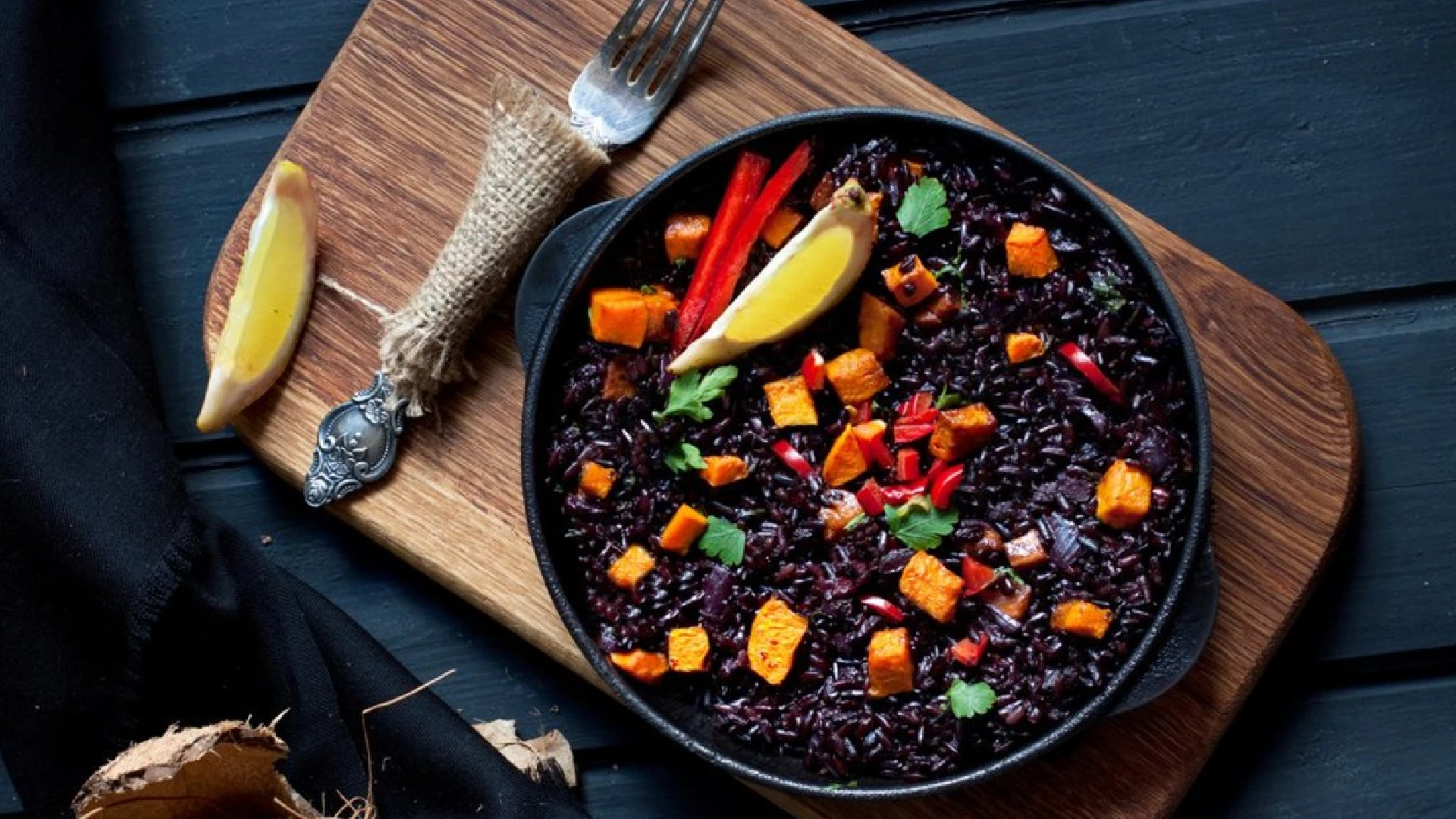Black rice, also known as forbidden rice or “emperor’s rice,” is gaining popularity due to its nutritional value and high antioxidant content. Rice called forbidden rice was once reserved for the Chinese emperor for his health and longevity, and forbidden to anyone else. The forbidden rice has a deep purple hue and a nutty, slightly sweet taste. It is a medium-grain, non-glutinous heirloom rice. The color of this whole-grain rice is a result of anthocyanins, which are antioxidant pigments. In comparison with other rice varieties, forbidden rice is high in protein and iron; according to Chinese medicine, it is a blood tonic.
The Origin
A type of rice that was created about 10,000 years ago in China is the ancestor of thousand of types of modern rice. Black rice is unique. Its bluish black color is caused by its concentration of anthocyanins, the same antioxidant responsible for the colors of eggplant, blueberries, acai berries, and concord grapes, as well as purple cauliflower, purple corn, and blood orange.
Genetic mutations are responsible for the color of black rice, which affects most cultivated rice varieties. A mutation in a gene that controls anthocyanin resulted in black rice; this mutation occurred in a subspecies of rice.1 Since then, the black rice has been reproduced and transferred to other rice species through cross-breeding.
The Cultivation
Rice varieties that yield more than 10 percent of the harvest of other rice varieties are not as easy to grow as black rice. Due to its price, the rice was initially reserved only for the richest of the rich, which was Chinese royalty when it was first discovered. Several Southeast Asian countries cultivate this grain, including India, Indonesia, Thailand, and China. A result of its popularity in Western countries, it is now also grown in small quantities in the South of the United States.
The Nutritional Value
The black variety of rice is the most fiber-rich and protein-rich among the other varieties. Together with its high level of anthocyanins, this makes it a nutrition powerhouse. Half a cup of prepared black rice, made from 1/4 cup of uncooked rice, provides 160 calories, 34 grams of carbohydrates, , 1 1/2 grams of fat, 5 grams of protein, 2 grams of fiber, and 4 percent of iron nutrients.
Where to Buy Black Rice
Prior to now, black rice has only been available in Asian specialty markets and gourmet grocery stores. However, now that it is more popular, Whole Foods, Target, and Walmart sell it, as well as Amazon and other online sellers. Make sure your local grocery store also carries it. Remember that black rice might be called emperor’s rice or forbidden rice in restaurant food menus.
How to Cook Black Rice
Cooking black rice is identical to cooking other types of rice. After bringing the water to a boil, add the rice and stir, covered, till the rice is tender and make sure the water has been absorbed. Black rice takes about 10 minutes longer to cook than other types of rice.
For a more exciting presentation as well as an additional nutritional boost, you can replace white rice in meal recipes and dishes with black rice. Forbidden rice is particularly delicious in a Thai black sticky rice pudding, a dessert that is sweet and satisfying and good for you.
